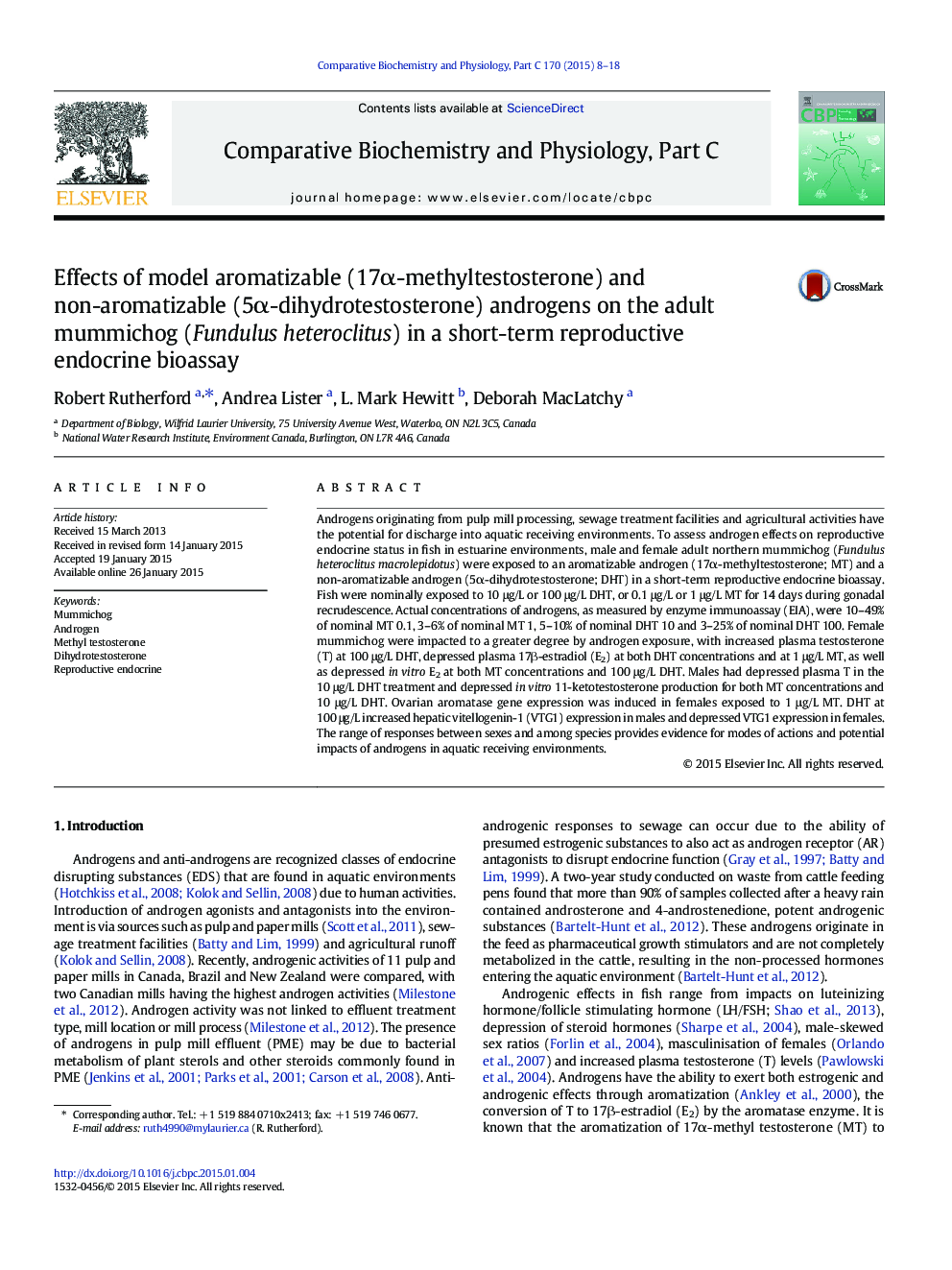| Article ID | Journal | Published Year | Pages | File Type |
|---|---|---|---|---|
| 1977233 | Comparative Biochemistry and Physiology Part C: Toxicology & Pharmacology | 2015 | 11 Pages |
Androgens originating from pulp mill processing, sewage treatment facilities and agricultural activities have the potential for discharge into aquatic receiving environments. To assess androgen effects on reproductive endocrine status in fish in estuarine environments, male and female adult northern mummichog (Fundulus heteroclitus macrolepidotus) were exposed to an aromatizable androgen (17α-methyltestosterone; MT) and a non-aromatizable androgen (5α-dihydrotestosterone; DHT) in a short-term reproductive endocrine bioassay. Fish were nominally exposed to 10 μg/L or 100 μg/L DHT, or 0.1 μg/L or 1 μg/L MT for 14 days during gonadal recrudescence. Actual concentrations of androgens, as measured by enzyme immunoassay (EIA), were 10–49% of nominal MT 0.1, 3–6% of nominal MT 1, 5–10% of nominal DHT 10 and 3–25% of nominal DHT 100. Female mummichog were impacted to a greater degree by androgen exposure, with increased plasma testosterone (T) at 100 μg/L DHT, depressed plasma 17β-estradiol (E2) at both DHT concentrations and at 1 μg/L MT, as well as depressed in vitro E2 at both MT concentrations and 100 μg/L DHT. Males had depressed plasma T in the 10 μg/L DHT treatment and depressed in vitro 11-ketotestosterone production for both MT concentrations and 10 μg/L DHT. Ovarian aromatase gene expression was induced in females exposed to 1 μg/L MT. DHT at 100 μg/L increased hepatic vitellogenin-1 (VTG1) expression in males and depressed VTG1 expression in females. The range of responses between sexes and among species provides evidence for modes of actions and potential impacts of androgens in aquatic receiving environments.
